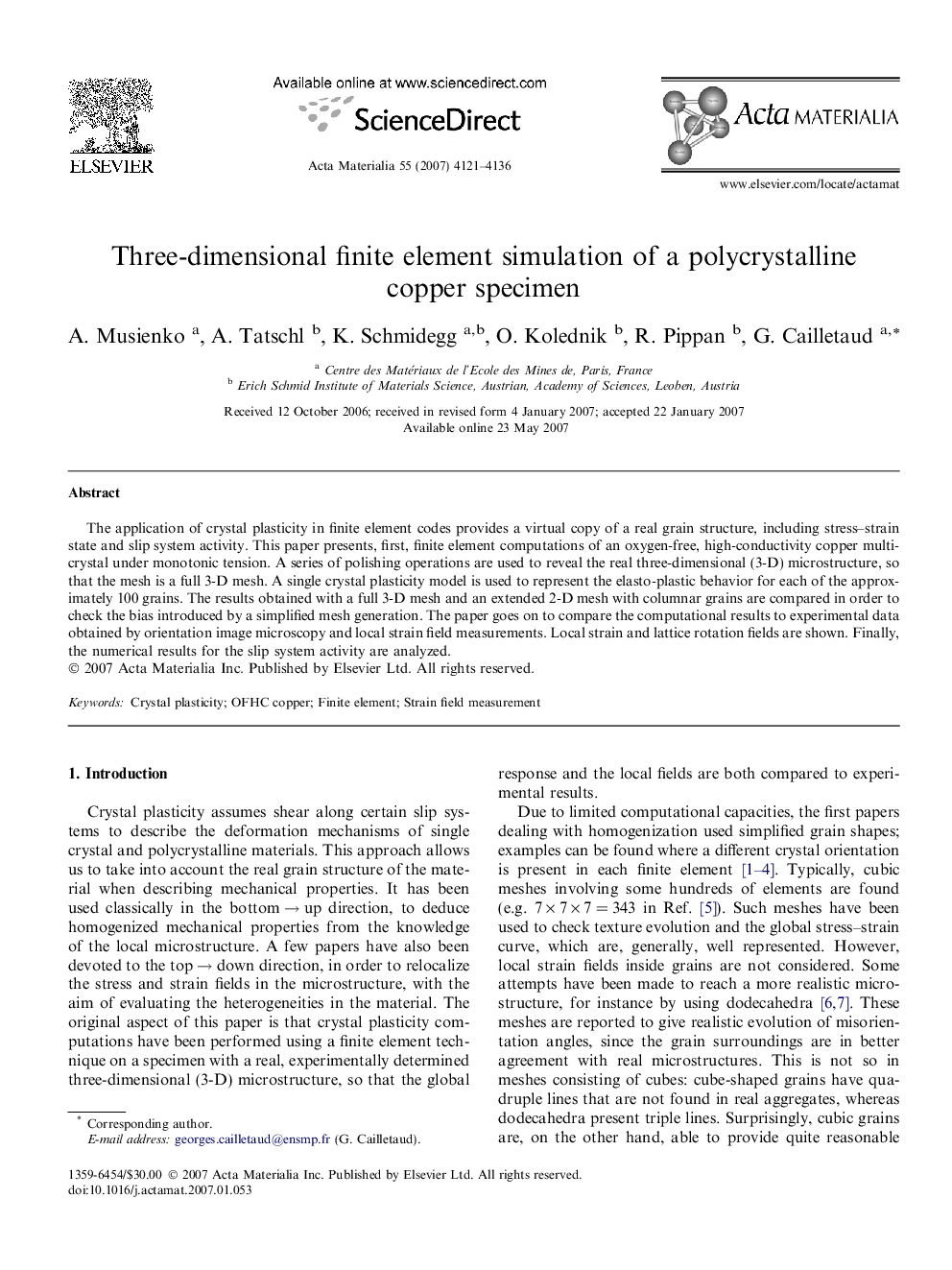| Article ID | Journal | Published Year | Pages | File Type |
|---|---|---|---|---|
| 1449546 | Acta Materialia | 2007 | 16 Pages |
The application of crystal plasticity in finite element codes provides a virtual copy of a real grain structure, including stress–strain state and slip system activity. This paper presents, first, finite element computations of an oxygen-free, high-conductivity copper multicrystal under monotonic tension. A series of polishing operations are used to reveal the real three-dimensional (3-D) microstructure, so that the mesh is a full 3-D mesh. A single crystal plasticity model is used to represent the elasto-plastic behavior for each of the approximately 100 grains. The results obtained with a full 3-D mesh and an extended 2-D mesh with columnar grains are compared in order to check the bias introduced by a simplified mesh generation. The paper goes on to compare the computational results to experimental data obtained by orientation image microscopy and local strain field measurements. Local strain and lattice rotation fields are shown. Finally, the numerical results for the slip system activity are analyzed.
